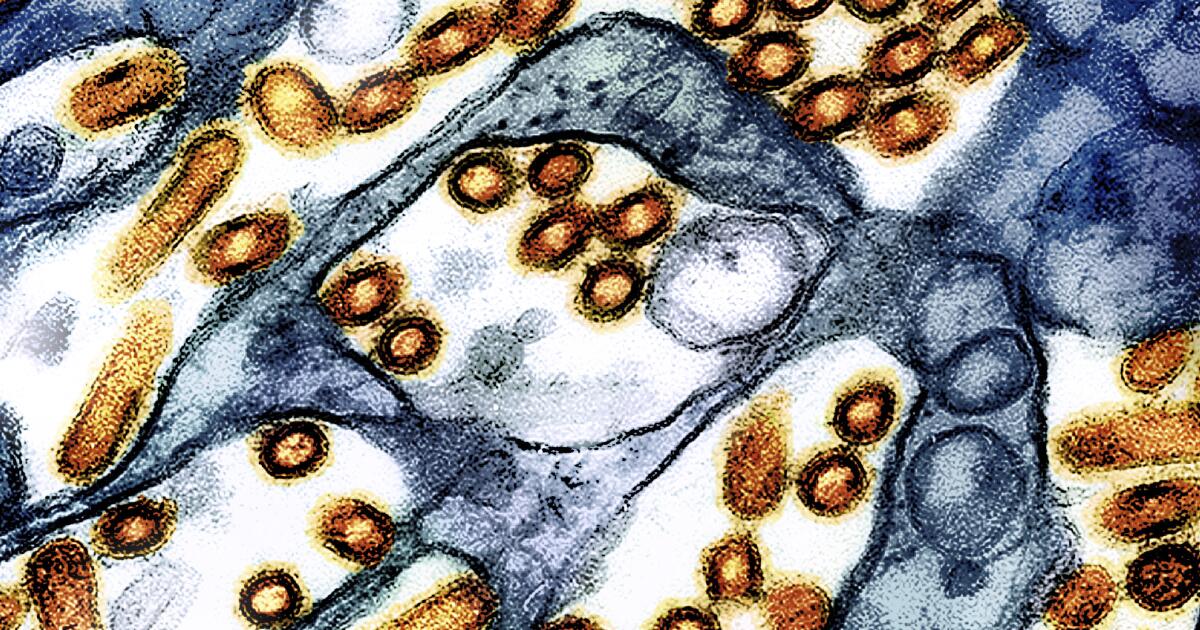Pennsylvania
Pennsylvania Turnpike to switch to

While putting air in his tire near the Pennsylvania Turnpike, Sean Malloy said he uses the highway often.
Malloy said he welcomes the change to open road tolling if it means it makes his commute more convenient.
“No brainer. They should’ve done that a long time ago,” said Malloy.
Tollbooths will soon become a thing of the past on the Pennsylvania Turnpike with the change that begins on Sunday.
Drivers will be charged electronically as they pass under overhead structures called gantries, instead of the traditional stop-and-go tolling. For E-ZPass drivers, the toll money will be taken out of your account, but others will receive a bill in the mail.
The commission advises drivers to make sure they mount their E-ZPass tag in their vehicle and have all their information including their vehicle and credit card updated.
Open road tolling allows drivers to pass through a toll, without the hassle of stopping. This method also reduces incidents on the highway and increases customer convenience.
The change will first start east of Reading and along the Northeast Extension.
“I’ve had E-ZPass for a few years, so I’m kind of used to the drive-thru. I think it’s going to make it a lot simpler for everybody. I think it’s going to avoid a lot of congestion,” said Pennsylvania resident Tony Cuttone.
Another change is how the toll will be calculated. The turnpike will now use the number of axles, height, and miles traveled rather than the vehicle’s weight to determine the rate.
A 5% toll increase will also take effect on Sunday, but the Pennsylvania Turnpike Commission said that with open road tolling and other changes, most non-commercial drivers will pay less than they did before, but commercial drivers could see an increase of up to $5.
“We worked really hard behind the scenes to make sure that all of the changes that are coming with open road tolling are all revenue neutral,” said Marissa Orbanek with the Pennsylvania Turnpike Commission.
Orbanek said the changes will modernize the system and also make it safer to travel.
“We actually have open road tolling highlighted throughout our system currently at the Delaware River Bridge which is closer to the customers in Philadelphia. And where we already highlighted open road tolling, we’ve seen a decrease in the percentage of crash rates,” she said.
The Pennsylvania Turnpike Commission said it will begin removing the toll booths later this year.

Pennsylvania
Aliquippa vs. Twin Valley: Watch Pa. high school football playoff state semifinal live

If you purchase a product through a link on our site, we may receive compensation.
The Pennsylvania high school football playoffs are on to the state semifinals, with fans being treated to postseason PIAA games all over the state Friday and Saturday.
One of the top games to watch is Twin Valley vs. Aliquippa on Friday night in the Class 4A state semifinals.
- WATCH LIVE: Twin Valley vs. Aliquippa football is streaming live on NFHS Network
The winner will take on either Cardinal O’Hara or Southern Lehigh in the PIAA 4A state championship game next week.
- Best high school football players in Pennsylvania in 2025: QBs | RBs | WR/TEs | OL/DL
Opening kickoff is set for 7 p.m. ET on Friday, November 28 in Highland Park, Pa., with a live TV broadcast on NFHS Network.
High school championships on NFHS Network
Watch high school sports anywhere from wherever you are.
Watch now
Aliquippa knocked out Kemon Spell and McKeesport two weeks ago for the Class 4A WPIAL championship, then got past Oil City last week. Twin Valley beat Susquehanna Township in the District 3 4A title round last week.
In the most recent PennLive Class 4A rankings, Twin Valley (13-0) is No. 1 and Aliquippa (10-3) is No. 3.
The quest for a trip to the 2025 PIAA state championships is nearing an end. The finals in all classifications will be played Dec. 4-6 at Cumberland Valley High School in Mechanicsburg.
How to watch Twin Valley vs. Aliquippa football livestream
What: Twin Valley vs. Aliquippa in Class 4A Pennsylvania high school football state semifinals
When: Kickoff is set for 7 p.m. ET on Friday, November 28
Where: Mifflin County High School | Highland Park, Pennsylvania
Watch live: Watch Twin Valley vs. Aliquippa live on the NFHS Network
Listen to the Pa. High School Football Report podcast
Pennsylvania
Pennsylvania artists creates painting for fallen IRCSO deputy

INDIAN RIVER COUNTY, Fla. — A Pennsylvania artist is honoring Sgt. Terri Sweeting-Mashkow, through a moving tribute — a powerful painting inspired by her service and sacrifice.
Jonny Castro created the piece, and he is a police officer and forensic composite artist based in Philadelphia, Pennsylvania.
WATCH WPTV’S COVERAGE BELOW:
Pennsylvania artists creates painting for fallen IRCSO deputy
Castro has created more than 2,000 portraits of fallen first responders, and his most recent is Sgt. Sweeting-Mashkow’s.
“What makes it so special is just the fact that she was given that sergeant rank for giving her life in the line of duty,” said Castro. “Her selfless service and her heroism.”
Sgt. Sweeting Mashkow was shot and killed Friday while serving an eviction notice in the Bermuda Club Community off A1A. Castro ties in his roles as a police officer and forensic composite artist into his work.
“You’re constantly working, constantly drawing facial features, so about 10 years ago, coming up on 10 years, I did my first one and everybody seemed to enjoy it,” said Castro.
He said after learning about Sgt. Sweeting Mashkow’s tragedy, he was deeply moved. He learned about it on social media and immediately began sketching.
“It’s sad to think that she was on the job for 25 years,” said Castro.
He also created a portrait for the three fallen Palm Beach County Sheriff’s Office deputies last year.
“What do you hope loved ones say or feel when they see this portrait that you created?” asked WPTV’s Zitlali Solache.
“I hope they know there are people like me all the way up in Pennsylvania and as far west as California that are praying for her family and wishing them the best during this tragic time — especially around the holidays,’ replied Castro.
The goal is for the art to be a piece that the family holds dearly. Castro said he will also begin sketching David Long’s piece on Tuesday. Long is the locksmith also involved in the fatal eviction call.
“I think that’s what makes it special, just because she doesn’t have any photos. She will never have a photo as a sergeant,’ said Castro. “This may be the only one, so I just hope to know the family enjoys it and they hang it proud on their wall.”
Castro says he will be in touch with Sheriff Eric Flowers to ship the painting over.
Pennsylvania
Popular HBO series gets biggest-ever Pa. film tax credit | Today in Pa.

Want a say in the news? Email Claudia at todayinpa@pennlive.com to have your thoughts on the stories covered here or on PennLive heard.
You can listen to the latest episode of “Today in Pa” on any of your favorite apps including Alexa, Apple, Spotify, Stitcher and YouTube. Episodes are available every weekday on PennLive. Feel free to subscribe, follow or rate “Today in Pa.” as you see fit!
SEPTA says it’ll fully restore rail service by late next month. Alcohol sales dipped statewide last year. This is Thanksgiving’s current forecast, which many of you might be wondering about. Also, Pennsylvania just gave a record film tax credit to a popular HBO series.
Those are the stories we cover in the latest episode of “Today in Pa.,” a daily weekday podcast from PennLive.com and hosted by Claudia Dimuro. “Today in Pa.” is dedicated to sharing the most important and interesting stories pertaining to Pennsylvania that lets you know, indeed, what’s happening today in Pa.
Today’s episode refers to the following articles:
If you enjoy “Today in Pa.,” consider leaving us a review on Apple Podcasts or on Amazon. Reviews help others find the show and, besides, we’d like to know what you think about the program, too.
-

 World1 week ago
World1 week agoFrance and Germany support simplification push for digital rules
-

 Science6 days ago
Science6 days agoWashington state resident dies of new H5N5 form of bird flu
-

 World1 week ago
World1 week agoPoland to close last Russian consulate over ‘unprecedented act of sabotage’
-

 Politics1 week ago
Politics1 week agoLawmakers warned PennDOT of illegal immigrant-CDL crisis before bust; GOP demands answers from Shapiro
-

 News1 week ago
News1 week agoHow Every House Member Voted to Release the Epstein Files
-

 News1 week ago
News1 week agoAnalysis: Is Trump a lame duck now? | CNN Politics
-
Business1 week ago
Amazon’s Zoox offers free robotaxi rides in San Francisco
-

 Technology1 week ago
Technology1 week agoThe best early Black Friday deals we’ve found so far on laptops, TVs, and more






















